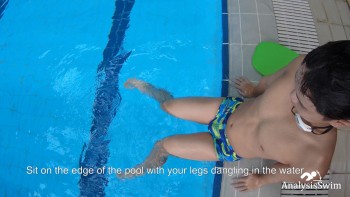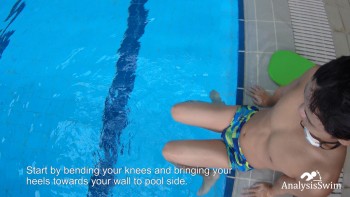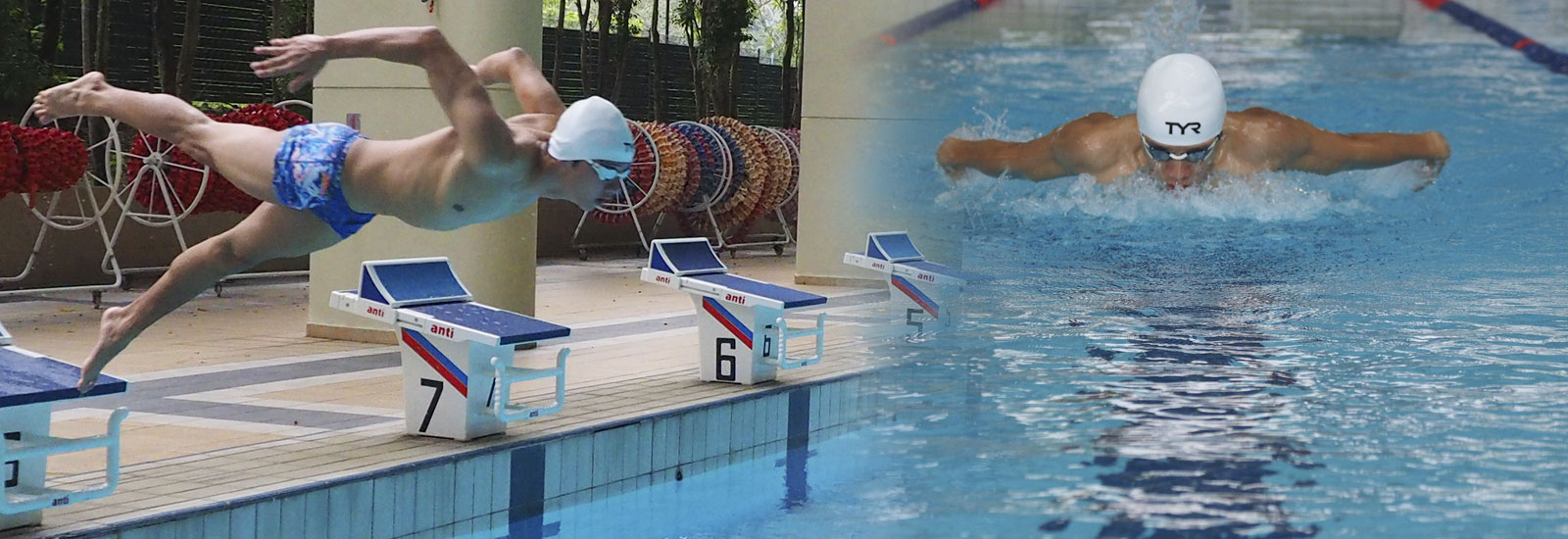Breaststroke kick seating on the poolside
Seated breaststroke kick on the poolside is a great exercise to work on your leg strength and kicking technique for the breaststroke swimming style.
Here’s how you can do it:

Find a Spot on pool side:
Sit on the edge of the pool with your legs dangling in the water. Make sure you’re in a stable position where you can comfortably lean back slightly without feeling like you might fall into the pool.
Positioning:
Place your hands on either side of your hips on the pool deck to support your body. Keep your back straight and your chest up.

Leg Movement:
Start by bending your knees and bringing your heels towards your wall to poolside. Then, simultaneously, extend your legs outward and apart in a circular motion, making a sweeping movement like a frog kick.
Kick Motion:
As your legs extend, point your toes outward and then bring them back together in a streamlined position with your ankles flexed. This is the key movement of the breaststroke kick – the whip-like motion that generates propulsion.
Breathing:
However, you can still work on coordinating your breathing with the kick by exhaling as you extend your legs and inhaling as you bend your knees.
Repetitions:
Aim for multiple repetitions of the kick, focusing on the quality of the movement rather than speed. Gradually increase the number of repetitions as you build strength and improve your technique.
Variations:
You can vary the intensity of the exercise by adjusting the speed and power of your kicks. You can also try holding a kickboard between your legs for added resistance.
Cooldown:
After completing your sets, take a moment to stretch your leg muscles to prevent any stiffness or cramping.
Consultation:
If you’re new to swimming or have any existing injuries or conditions, it’s advisable to consult with a swimming instructor or healthcare professional before attempting this exercise to ensure it’s suitable for you.
Remember to focus on proper technique and controlled movements to get the most out of this exercise while minimizing the risk of injury.


